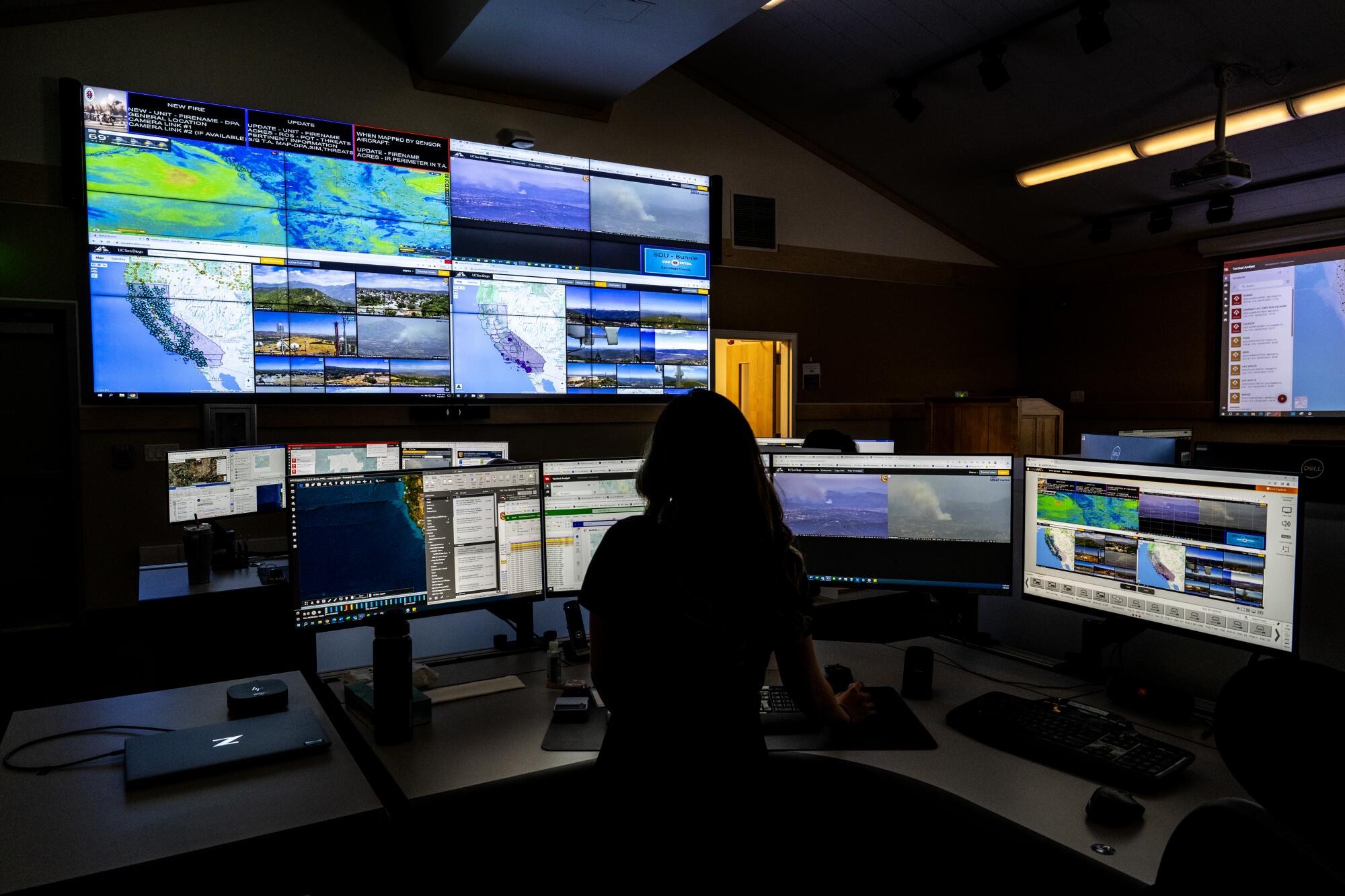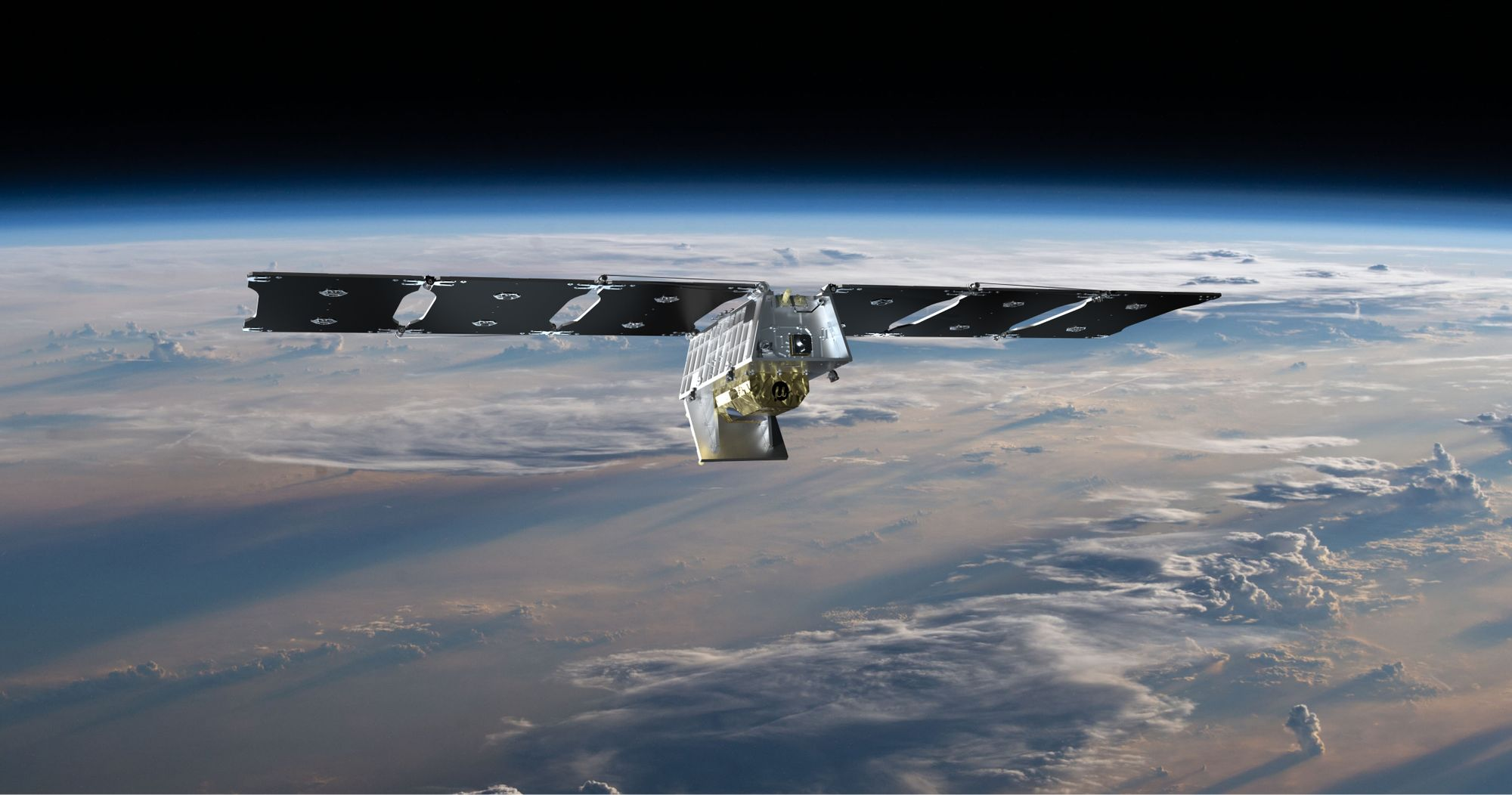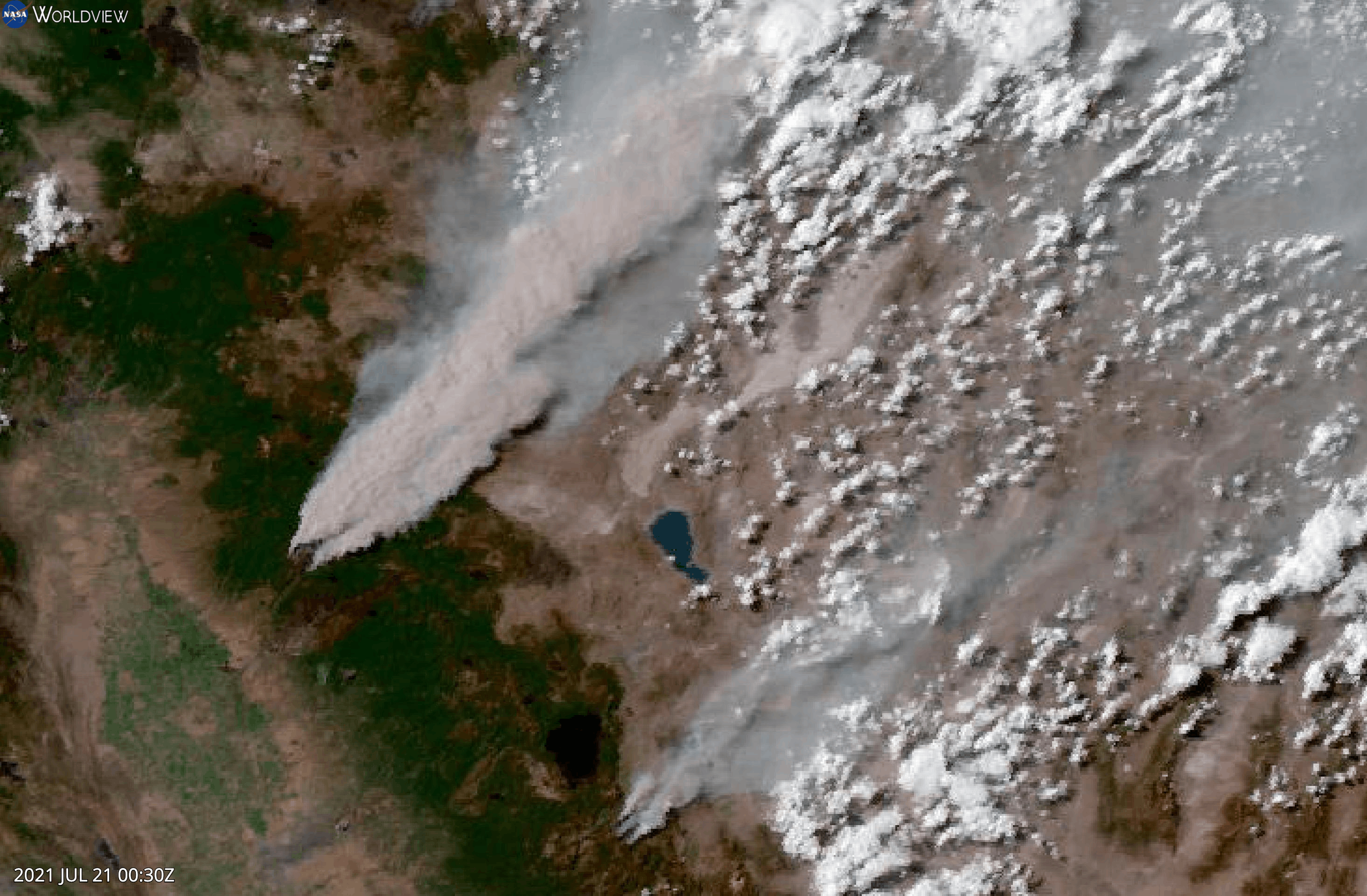
Never before have Californians had more climate information at their fingertips: Planes soar above the Sierra measuring snowpack with lasers; cameras enhanced with artificial intelligence scan the landscape for wildfire; and satellites swirl overhead collecting detailed images of real-time conditions.
But even with all these tools, the state lacks a centralized database where researchers, policymakers, emergency responders and members of the public can easily tap into this bounty of information.
A project dubbed the California Climate Information System, or CalCIS, sought to change that, but has instead become a casualty of the state budget crisis.
Among the cuts intended to close California’s $46.8-billion deficit was a joint effort between the California Natural Resources Agency and NASA’s Jet Propulsion Laboratory that would have made California the first state in the nation to create an open-source, continually refreshed climate data hub.
Aggressive and impactful reporting on climate change, the environment, health and science.
Now, environmentalists are decrying the loss of CalCIS and urging that it be funded next year, if not sooner. They say the project is essential if California is to prepare for the extreme hazards that lie ahead due to climate change — worsening wildfires, droughts, floods, heat waves and rising sea levels.
“In an era when the global climate crisis continues to get worse over time, it is imperative that the state use the best available and most current remote sensing and climate data to make important and timely adaptation and mitigation decisions that will better protect public health, property, natural resources and biodiversity,” read a letter signed by more than 30 state scientists and experts, who urged Gov. Gavin Newsom and other officials to save CalCIS from the chopping block.
Among the project’s most vocal advocates is Terry Tamminen, a former secretary of the California Environmental Protection Agency who now serves as the president and chief executive of the Los Angeles-based technology group AltaSea.
He described the decision to cut funding from the program as “penny-wise and pound foolish,” and noted that CalCIS could help the state avoid billions of dollars in property losses and potentially save lives.
“I understand, in tough budget years, that you have to trim things that may be deemed nonessential, but climate change is a very current, urgent, but also long-term issue we’re going to have to face,” Tamminen said.
He added that NASA, JPL and many other institutions and international agencies are constantly developing new sources of Earth science monitoring, measuring and reporting, “and if we don’t integrate all of that latest data into our system for predicting what’s going to happen and then taking adaptive measures, then we’re just flying blind.”
The project is far from the only climate-related item to face budget cuts as Newsom declares a fiscal emergency in the state. Though a detailed version of the final budget has yet to be released, the $297.9-billion spending plan announced this week says at least $3 billion will be shifted away from clean energy and other climate-related programs.

A floor report published by the state Assembly’s budget committee outlines some of those cuts, including $75 million from regional climate resilience efforts; $14 million from extreme heat awareness campaigns; $10 million from climate adaptation and resilience planning grants; as well as $3 million from a climate health and surveillance program.
However, the floor report notes that the proposed budget preserves roughly $45 billion of the original $54-billion climate package approved in 2022, including funding for sustainable agriculture, water recycling, offshore wind infrastructure, and “historic investments in sea level rise and ocean protection, wildfire prevention, electric vehicles, and public transportation.”
The report also confirms that $18.3 million will be cut from CalCIS — the entire amount that had been appropriated for the first phase of the project, which was essential to getting it off the ground.
The cut was “one of multiple decisions that were necessary in order to close the budget shortfall, and not any kind of implicit or explicit statement of underlying policy concern,” said H.D. Palmer, a spokesman for the California Department of Finance.
Gov. Gavin Newsom and Democrats in the California Legislature reached a deal to solve the budget deficit for the 2024-25 fiscal year.
Mark Gold, an adjunct professor at UCLA’s Institute of the Environment and Sustainability who helped craft the memorandum of understanding between JPL and the California Natural Resources Agency in 2022, said CalCIS’ relatively low price tag was built on existing tools, technologies and satellites, many of which have been bought and paid for.
“In comparison to discussions and debates over a $35-[billion] to $50-billion deficit, this is sort of a rounding error, but it’s so important,” Gold said. “I can’t emphasize enough how important this effort is to move California into the 21st century for effective adaptation and mitigation.”
The $18-million first phase of the project would have created the CalCIS framework, including populating it with data and developing some data products, he said. Phase two, which would have required additional funding, would have filled in more gaps with ground and airborne information, and trained state staff to utilize the products effectively.
“The cuts kill CalCIS,” Gold said.
The state does have some useful data centers and remote tracking capabilities, he said, such as the California Department of Water Resource’s California Water Watch website, or the California Air Resources Board’s methane emissions tracker.
But many systems are operating on data that are outdated, such as vegetation maps from the California Department of Fish & Wildlife that are updated only sporadically. The state’s official climate change assessment is typically conducted every five years, with the last update published in 2018.
What’s more, housing these tools in disparate places can create silos that make it difficult for leaders and first responders to access information easily or with urgency during an emergency such as a wildfire, Gold said.

“It’s wonderful from the standpoint of academia ... but that doesn’t mean that the decision-makers on the ground who are trying to build climate resilience, who are trying to protect us from climate catastrophes, are plugged into the latest information and what the latest information means,” Gold said.
“This was going to be a total freaking game changer,” he added. “The hope was that you get this great partnership between the state and NASA/JPL, and you demonstrate the utility of the work in the final California Climate Information System, and it becomes the same sort of M.O. that’s used for the entire nation. But it starts in California.”
Officials at the Jet Propulsion Laboratory declined to comment on the cut but said the agency’s Earth science missions are continuing to study climate change, sea level rise, methane emissions and natural disasters, and that all of that data are made publicly available.
“We also have a history of working with the state of California on climate change studies and we highly value our ongoing relationship,” JPL officials said.
New missions backed by Google, NASA and other groups will monitor the planet’s worsening wildfire activity from outer space.
The California Natural Resources Agency said similarly that it had been “working with our partners to plan for a range of next steps,” but that no funds had been spent on the CalCIS project as part of the planning process.
“Looking forward, the California Natural Resources Agency, with our many partners, is committed to continuing important work on climate action through policies, programs, and partnerships that also increase equity, improve public health, and create economic opportunity,” the agency said in a statement.
But CalCIS would have been something altogether different, said Tamminen, who outlined some of the ways it could have been used.
For instance, real-time data from buoys tracking ocean currents, temperature and weather conditions could be integrated into CalCIS and used to inform shipping companies about minute course changes that could significantly reduce their use of fuel and related emissions, he said.
Or when a lightning strike ignites a wildfire, CalCIS could combine the strike’s location with wind, moisture and temperature conditions within seconds to predict how quickly the fire will spread and in what direction, helping crews get into position.
“The technology is getting faster, better, cheaper all the time, and if you don’t have a platform that can integrate all of those new sources of information, you’re missing the opportunity to go from watching the nightly news and hoping you get it right, to actually getting instantaneous recommendations and data,” Tamminen said.
He said he is hopeful that CalCIS can be revived in the future. While it seems unlikely to be included in any upcoming trailer bills or the proposed climate bond, it could potentially receive its needed funding next year.
Still, he added, the problems the project would help address are becoming increasingly urgent, and any time lost on building it could have real-world consequences.
“Here we are in the home of Silicon Valley, where you can get anything on a smartphone, but we’re acting like a dumb phone,” he said. “We are one of the most impacted states when it comes to climate change, and data is everything.”
Toward a more sustainable California
Get Boiling Point, our newsletter exploring climate change, energy and the environment, and become part of the conversation — and the solution.
You may occasionally receive promotional content from the Los Angeles Times.










